Filter by
You must be a CTBUH Member to view this resource.
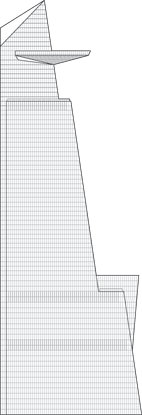
30 Hudson Yards
Hudson Yards Tower A, Manhattan Tower, Hudson Yards North Tower
Building
Completed
2019
Office
All-Steel
LEED Gold BD+C: Core and Shell
387.1 m / 1,270 ft
73
1
59
241,548 m² / 2,600,001 ft²
You must be a CTBUH Member to view this resource.
You must be a CTBUH Member to view this resource.
Proposed
Construction Start
Completed
Usually involved in the front end design, with a "typical" condition being that of a leadership role through either Schematic Design or Design Development, and then a monitoring role through the CD and CA phases.
The Design Engineer is usually involved in the front end design, typically taking the leadership role in the Schematic Design and Design Development, and then a monitoring role through the CD and CA phases.
The Design Engineer is usually involved in the front end design, typically taking the leadership role in the Schematic Design and Design Development, and then a monitoring role through the CD and CA phases.
The main contractor is the supervisory contractor of all construction work on a project, management of sub-contractors and vendors, etc. May be referred to as "Construction Manager," however, for consistency CTBUH uses the term "Main Contractor" exclusively.
Other Consultant refers to other organizations which provided significant consultation services for a building project (e.g. wind consultants, environmental consultants, fire and life safety consultants, etc).
Material Supplier refers to organizations which supplied significant systems/materials for a building project (e.g. elevator suppliers, facade suppliers, etc).
You must be a CTBUH Member to view this resource.
Usually involved in the front end design, with a "typical" condition being that of a leadership role through either Schematic Design or Design Development, and then a monitoring role through the CD and CA phases.
The Design Engineer is usually involved in the front end design, typically taking the leadership role in the Schematic Design and Design Development, and then a monitoring role through the CD and CA phases.
The Design Engineer is usually involved in the front end design, typically taking the leadership role in the Schematic Design and Design Development, and then a monitoring role through the CD and CA phases.
The main contractor is the supervisory contractor of all construction work on a project, management of sub-contractors and vendors, etc. May be referred to as "Construction Manager," however, for consistency CTBUH uses the term "Main Contractor" exclusively.
Other Consultant refers to other organizations which provided significant consultation services for a building project (e.g. wind consultants, environmental consultants, fire and life safety consultants, etc).
Material Supplier refers to organizations which supplied significant systems/materials for a building project (e.g. elevator suppliers, facade suppliers, etc).
2022 CTBUH Awards
22 August 2018 - CTBUH Research
27 July 2018 - CTBUH Publication

17 October 2016 | New York City
Monday October 17, 2016. Shenzhen, China. Dennis Poon of Thornton Tomasetti, presents at the 2016 China Conference Session 4c: Structural & Geotechnic Engineering. As the...
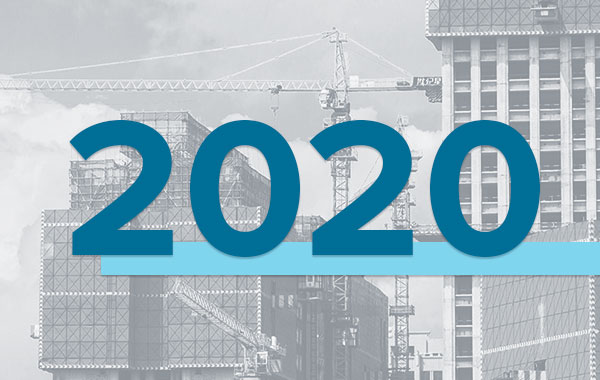
30 January 2020
CTBUH Research
The combined brains of the CTBUH editorial and database staff boldly predict what might happen across the global skyscraper industry in 2020. Check out our...

02 September 2020
Edge, among the highest outdoor sky decks in the Western Hemisphere, announced that it reopened to the public on 2 September 2020 at Noon. The...
30 Hudson Yards will anchor the Hudson Yards development, touted as the largest private real estate development in United States history. Located on the west side of Manhattan, Hudson Yards is to become a new center for retail, commerce, and culture for the area. The whole development is intended to be an integrated “city within a city,” incorporating residential and office buildings, streets, parks, utilities, and commercial space into one complete whole. Built on top of an active rail yard, and located steps away from a recent subway extension, Hudson Yards will be thoroughly incorporated into the larger urban fabric.
As the largest planned building in the development, 30 Hudson Yards stands out not just for its size, but for how it relates to the nearby towers through a series of setbacks and ledges. Rising from a shared podium, 10 and 30 Hudson Yards have a mirrored relationship; they gently taper away from each other, creating a “v”-shaped negative space between them. This strong visual interaction is meant to anchor the dynamic architectural presence of the development.
Unlike most buildings in the complex, the tower will be devoted primarily to office space. It will feature column-free floor plans and floor-to-ceiling glass in order to maximize surrounding views, as well as a cantilevered observation deck that will be open to the public. Several sustainable design solutions will be present on site, including organic waste collection and on-site energy generation, resulting in an expected LEED Gold certification and a 30 percent increase in energy efficiency when compared to the average New York City building. As the mainstay of a development that seeks to redefine Manhattan’s west side, 30 Hudson Yards is poised to make a significant and enduring mark on The Big Apple.
2022 CTBUH Awards

17 October 2016 | New York City
Monday October 17, 2016. Shenzhen, China. Dennis Poon of Thornton Tomasetti, presents at the 2016 China Conference Session 4c: Structural & Geotechnic Engineering. As the...

18 September 2014 | New York City
September 18, 2014. Shanghai, China. James von Klemperer from Kohn Pedersen Fox Associates PC presents at the 2014 Shanghai Conference closing plenary on "Urban Density...

30 January 2020
CTBUH Research
The combined brains of the CTBUH editorial and database staff boldly predict what might happen across the global skyscraper industry in 2020. Check out our...
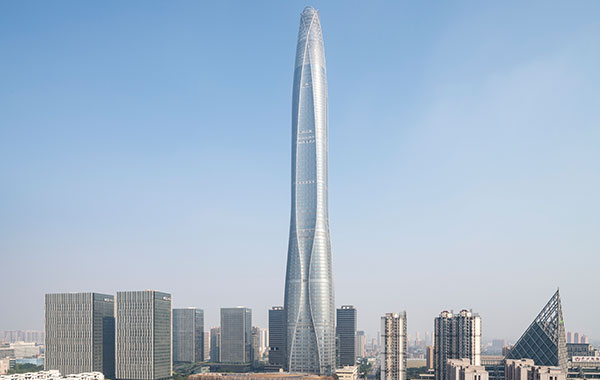
12 December 2019
CTBUH Research
The year 2019 was remarkable for the tall building industry, with 26 supertall buildings (300 meters or taller) completed, the most in any year. This...

28 July 2018
Aine Brazil, Thornton Tomasetti
Aine Brazil, Vice Chairman, Thornton Tomasetti, is the recipient of the 2018 CTBUH Fazlur R. Khan Medal. Through a 40-plus-year career, she has been responsible...

22 October 2015
Jay Cross, Hudson Yards
Hudson Yards is the largest private real estate development ever undertaken in the United States. The site, built over a working rail yard, will eventually...
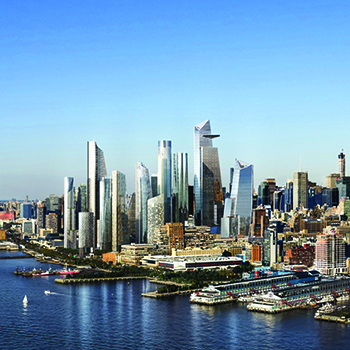
22 October 2015
Marianne Kwok, Kohn Pedersen Fox Associates
Hudson Yards is a mixed-use development built over rail yards on the west side of New York’s Manhattan Island. As the largest real estate project...
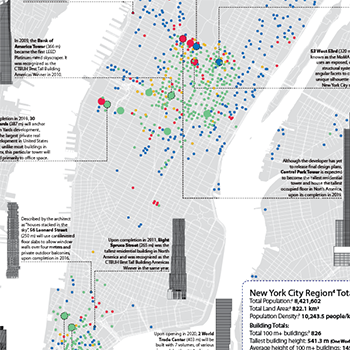
22 October 2015
CTBUH Research
A timeline of skyscraper completions in New York uncannily resembles the boom and bust cycles of the United States in the 20th and early 21st...

02 September 2020
Edge, among the highest outdoor sky decks in the Western Hemisphere, announced that it reopened to the public on 2 September 2020 at Noon. The...

09 March 2020
The opening of Edge, the highest outdoor sky deck in the Western Hemisphere, offering 360-degree views of New York City’s iconic skyline will be celebrated...

15 March 2019
At noon on March 15, 2019, New York’s newest neighborhood ceremonially opened for business. Hudson Yards‘ first public-facing attractions, the Shops & Restaurants and Thomas...
22 August 2018
CTBUH has released a Tall Buildings in Numbers (TBIN) interactive data study on the world's tallest buildings with dampers.
27 July 2018
In the 2018 CTBUH Journal Issue III, Aine Brazil, Vice Chairman, Thornton Tomasetti, talks about her career highlights in high-rises and the support for more women in engineering.
13 October 2016
The Council is pleased to announce the Top Company Rankings for numerous disciplines as derived from the list of projects appearing in 100 of the World’s Tallest Buildings.
3 May 2016
The CTBUH Philadelphia Committee hosted speakers at the Hayworth Showroom in Philadelphia to discover how the development at 30th Street Station can be made a reality.
28 October 2015
CTBUH 2015 delegates toured City Point Complex, Barclays Center, and 461 Dean Street which have impacted the cityscape of Brooklyn.
28 October 2015
CTBUH 2015 delegates toured High Line, which have significantly changed the urban landscape of New York City, from its history to its near-future.
28 October 2015
CTBUH 2015 delegates toured the Hudson Yards develoment which is the largest private real estate development in the history of the United States.
27 October 2015
The Hudson Yards Networking Reception took place on Tuesday evening in the incredible Time Warner Center, offering great views of Columbus Circle at the corner of Central Park.
Subscribe below to receive periodic updates from CTBUH on the latest Tall Building and Urban news and CTBUH initiatives, including our monthly newsletter. Fields with a red asterisk (*) next to them are required.
View our privacy policy